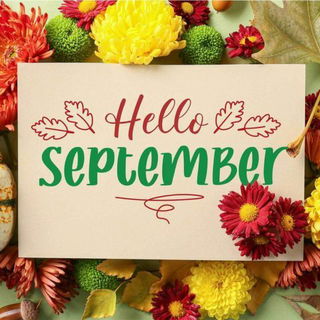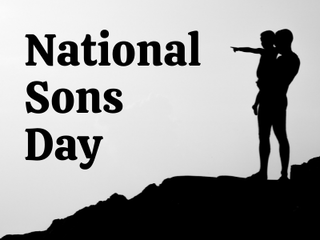June, the sixth month of the Gregorian calendar, arrives as the bright atmosphere of summer takes hold of the Northern Hemisphere in full swing.
June has 30 days, and it signifies the midpoint of the year, bringing with it longer, sunny days.
June includes the summer solstice, the longest day of the year in the Northern Hemisphere, and the winter solstice, the shortest day in the Southern Hemisphere.
In the Arctic Circle, the summer solstice brings the midnight sun, where the Sun stays visible even at midnight.
June also starts the Atlantic hurricane season (June 1 to November 30) and many monsoon seasons in the Northern Hemisphere.
It’s a month for meteor showers, including the Arietids, which peak on June 8.

The Naming of June
The month of June is often shortened to “Jun” and can be written with or without a period. The name comes from the Latin word Iunius, named after the Roman goddess Juno. The English spelling was shaped by Anglo-Norman words like join, junye, and junie. In Middle English, it was written as Iun or Juin, with the spelling Iune used until the 17th century. Before that, in Old English, June was called ærra liþa.
How did June Become The 6th Month
June is derived from the Roman month Iunius is the original name of the month in the original Roman calendar.
In the original Roman calendar, created by Romulus, June was the fourth month in a ten-month year consisting of 304 days. The months were:
- Martius (March)
- Aprilis (April)
- Maius (May)
- Junius (June)
- Quintilis (July)
- Sextilis (August)
- September
- October
- November
- December
King Numa Pompilius reformed this calendar around 713 BCE by adding January and February, creating a 12-month lunar year. Despite these changes, the year still began in March, leaving June as the fourth month.
This position shifted to the sixth month in 153 BCE when the consular year officially started in January due to military and administrative needs.
There was a belief in ancient Rome that believed mid-May to mid-June was a bad time for weddings.
The poet Ovid wrote about consulting a high priestess, who advised him to avoid scheduling his daughter's wedding until after June 15. However, the philosopher Plutarch suggested that the entire month of June was better for weddings than May.
In 46 BC, Julius Caesar introduced the Julian calendar, which set the year to 365 days, with an extra day (leap year) every four years. This change made June 30 days long. However, the Julian calendar wasn’t perfect, it was slightly longer than the solar year (the time it takes for Earth to orbit the sun). Over time, this caused the calendar to drift out of sync with the seasons.
In 1582, Pope Gregory XIII introduced the Gregorian calendar, which is the one we use today. This reform slightly shortened the calendar year to better match the solar year, ensuring that dates and seasons remained aligned. It also reaffirmed January 1 as the start of the year, solidifying June's position as the sixth month.
June's Climate and Harvest Across The Globe
The climate across the globe varies significantly as in the Northern Hemisphere, it is one of the hottest months.
On the other hand, the Southern Hemisphere experiences the cool beginnings of winter. June is also the beginning of the Atlantic hurricane season with tropical storms forming in the north Atlantic Ocean.
Monsoon rains mark the start of the rainy season in regions such as South Asia, East Asia, North America, and West Africa.
In contrast, the Mediterranean remains dry due to stable weather patterns. However, June has also seen extreme rainfall events, such as the remarkable 2.5 meters of rain that fell in Cherrapunji, India, over just two days in 1995.
June is a vibrant period for agriculture, with farmers harvesting a variety of crops and markets bustling with seasonal produce.
In the Northern Hemisphere, grains like wheat, barley, and rice are gathered, while fruits such as strawberries, cherries, blueberries, and watermelons reach their peak.
Vegetables like tomatoes, cucumbers, lettuce, and spinach are also plentiful.
Meanwhile, in the Southern Hemisphere, June is ideal for harvesting crops like maize, cotton, and soybeans.
Winter fruits, including citrus varieties like oranges and lemons, along with avocados, kiwifruit, and pears, are fresh and in season, highlighting the richness of this agricultural season.
June Traditions Across The Globe
-
In Catholic communities, June is devoted to the Sacred Heart of Jesus, symbolizing divine love and compassion. Special prayers, processions, and liturgies are held throughout the month.
-
Brazil celebrates the harvest season with colorful decorations, traditional foods, lively music, and the iconic quadrilha dance during June Festivals inspired by European midsummer traditions.
-
Pride Month unites LGBTQ+ communities with parades, festivals, and educational events to honor the fight for equality and celebrate diversity, with major celebrations in cities like New York, São Paulo, and Berlin.
-
Midsummer, or St. John’s Day, is celebrated in countries like Sweden, Finland, and Latvia with maypoles, folk songs, feasts, and the embrace of nearly endless daylight during the summer solstice.
-
The Dragon Boat Festival, also known as Duanwu Jie, honors poet and statesman Qu Yuan with dragon boat races, rice dumplings (zongzi), and rituals to ward off evil spirits, held on the fifth day of the fifth lunar month.
-
June's National Indigenous History Month highlights the cultures and histories of First Nations, Métis, and Inuit peoples through traditional dances, storytelling, and community gatherings.
-
Caribbean-Americans are honored with music, food festivals, and cultural exhibitions showcasing the heritage and contributions of Caribbean nations to American culture.
Important June Observations
- June 1: Say Something Nice Day
- June 3: Chimborazo Day
- June 5: World Environment Day
- June 6: National Yo-Yo Day
- June 8: Upsy Daisy Day
- June 14: Flag Day (U.S.)
- June 16: Father’s Day
- June 19: Juneteenth
- June 20/21: Summer Solstice
- June 21: National Indigenous Peoples Day (Canada)
- June 21: Go Skateboarding Day
- June 24: Midsummer Day/St. John the Baptist’s Feast Day
- June 28: Anniversary of the Stonewall Riots
- June 30: Asteroid Day
Interesting June Facts
- June's birthstones are the pearl, alexandrite, and moonstone, symbolizing purity, prosperity, and intuition.
- June's birth flowers are the rose and honeysuckle, both representing love, passion, and appreciation.
- The zodiac signs for June are Gemini (until June 20) and Cancer (starting June 21).
- June's full moon is called the “Strawberry Moon,” marking the ripening of strawberries.
- June is Pride Month, celebrating LGBTQ+ rights and equality.
See next: July, the 7th Month of The Year
Or, check out some of the other months:
- The 12 Months Of The Year (Everything You Need To Know)
- January: Why Is The 1st Month Of The Year
- Finding February: The Significance Of The Second And Shortest Month
- All About March: History, Celebrations, and Seasonal Highlights
- April: Meaning, Celebrations, and Seasonal Highlights You Should Know
- The Meaning Of May: Everything You Need To Know About The Fifth Month











